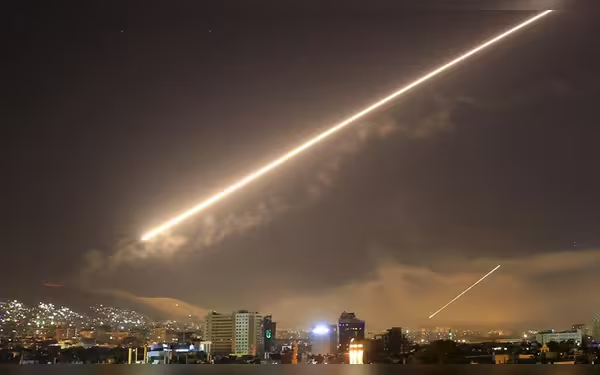Saturday, November 16, 2024 07:37 PM
Iranian Women Defy Hijab Laws Amidst Political Tensions
- Women increasingly appear without hijabs in public spaces.
- Iran's government intensifies surveillance against hijab non-compliance.
- Mahsa Amini's legacy inspires women's rights movement.
 Image Credits: arabnewspk
Image Credits: arabnewspkIranian women are increasingly defying hijab laws, inspired by Mahsa Amini's legacy, amidst heightened government surveillance.
In recent months, a noticeable shift has been observed in Iran regarding women’s attire, particularly concerning the hijab. As the second anniversary of Mahsa Amini's tragic death approaches, which ignited widespread protests across the nation, more women are seen walking in public without the mandatory headscarf. This change is occurring despite the Iranian government’s strict enforcement of hijab laws and the ongoing repression of dissent.
The phenomenon of women appearing in public without their hijabs has gained traction, especially during the hot summer months when power cuts have become commonplace. Social media platforms are flooded with videos showcasing women and girls confidently walking through the streets of Iranian cities, their hair flowing freely, particularly after sunset. This act of defiance is significant, as it occurs amidst what United Nations investigators describe as "expanded repressive measures and policies" aimed at punishing those who flout the hijab laws.
Iran's new reformist President, Masoud Pezeshkian, has promised to curb the harassment of women by the morality police. However, the ultimate authority in the country remains the Supreme Leader, Ayatollah Ali Khamenei, who has previously stated that "unveiling is both religiously forbidden and politically forbidden." This creates a complex environment where the push for change is met with staunch resistance from the highest levels of power.
For many observant Muslim women, wearing the hijab symbolizes piety and modesty. However, in Iran, the hijab has also become a political statement, representing the struggle for women's rights and personal freedom. The protests that erupted following Amini's death were initially centered around the slogan "Women, Life, Freedom," but they quickly evolved into broader calls for change, challenging the very foundations of the Iranian regime.
Despite the risks involved, including the return of the morality police and reports of violence against women who do not comply with hijab laws, many women continue to assert their right to choose. A 25-year-old student from Tehran expressed her determination, stating, "My quasi-courage for not wearing scarves is a legacy of Mahsa Amini, and we have to protect this as an achievement." This sentiment reflects a growing sense of empowerment among women in Iran.
The Iranian government has responded to this defiance with increased surveillance and crackdowns, targeting businesses and individuals who do not adhere to hijab regulations. Reports indicate that authorities are using drones to monitor public spaces for women without headscarves, demonstrating the lengths to which the government will go to enforce compliance.
However, some observers believe that the election of President Pezeshkian may signal a shift in the political landscape. A bookseller noted, "I think the current peaceful environment is part of the status after Pezeshkian took office." This suggests that there may be room for dialogue and change, even in a system that has historically been resistant to reform.
As the anniversary of Mahsa Amini's death approaches, the ongoing struggle for women's rights in Iran remains a focal point of national discourse. The increasing visibility of women without hijabs is not just a fashion statement; it is a powerful symbol of resistance against oppression. The situation in Iran serves as a reminder of the importance of standing up for one's rights and the ongoing fight for freedom and equality. As the world watches, the actions of these brave women may inspire others to challenge the status quo and advocate for change in their own societies.













